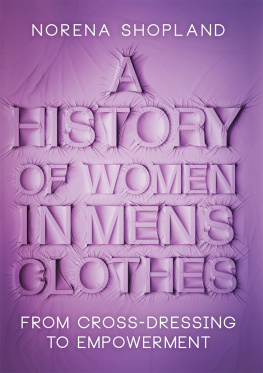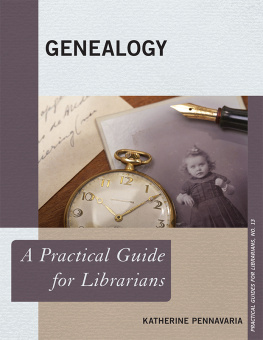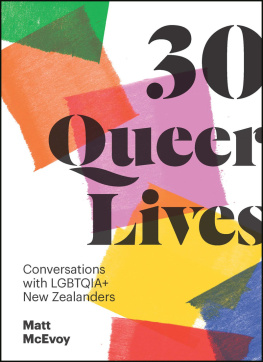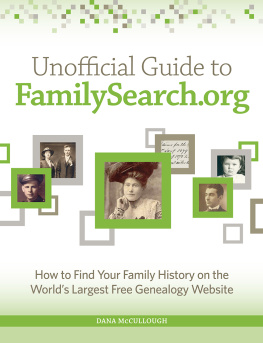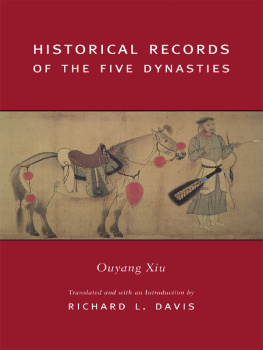
A practical guide to searching LGBTQIA historical records
This book provides a number of effective tools to aid in the recovery of LGBTQIA+ historic material, including extensive glossary and non-glossary written descriptions as well as guidance for using terms and phrases to search effectively online and offline.
Researching hidden and forbidden people from the past can be extremely difficult. Terminology used to write about LGBTQIA+ people shifts over time. Legal terminology enforces certain set terms, which some writers use but others reject to avoid informing or disgusting a reading public. Often written descriptions contain no set terminology at all. How then can LGBTQIA+ people be found in historic records? This book provides practical tools for researchers who want to uncover materials from online or hard-copy sources, including: keyword(s) covering various sexual orientations and gender diversity, along with how and when to use them; tips for effectively searching in online newspaper archives; information about how to use genealogy, auction and social media sites to uncover information; suggestions about searching in online and physical libraries; advice on researching in physical archives and the types of collections which can yield results; and guidance about researching in museums that collect and display LGBTQIA+ content.
This guide is a short, straightforward, jargon-free and accessible companion for doing historical research on lesbian, gay, bisexual, transgender, queer, intersex, asexual and other non-normative research subjects. It is a useful resource for students and scholars alike in archive studies, history or gender and sexuality studies.
Norena Shopland has a masters degree in heritage studies. Originally from Cardiff, she has worked for the British Museum, National Museums Scotland, the Museum of London and other heritage organisations. Now specialising in LGBTQIA+ studies, womens histories and Welsh history, she is responsible for several ground-breaking projects. Norena conceived and secured a National Heritage Lottery Fund (NHLF) grant for Welsh Pride, the first project in Wales to highlight the countrys LGBTQIA+ people, allies and events. She managed Gender Fluidity, the first funded transgender project in Wales. Her book Forbidden Lives: LGBT Stories from Wales is the first completely historical work on Welsh sexual orientation and gender identity. Norena lectures extensively and has appeared in the press, radio and TV. Her current projects include working with the Big Pit National Coal Museum on the first exhibition on women miners in Wales, working with Swanseas Waterfront Museum on an exhibition of Welsh button badges and supporting Race Council Cymru on their Windrush Cymru NHLF project. Her books include The Curious Case of the Eisteddfod Baton, which celebrates Welsh choral singing and the mining of Welsh gold; The Veronal Mystery, which examines a real-life gay crime, and Women in Male Attire: Their Fight to Wear Trousers, which is forthcoming from Pen and Sword Books in June 2021.
LGBTQ Histories
Queers in State Socialism
Cruising 1970s Poland
Edited by Tomasz Basiuk and Jdrzej Burszta
A Practical Guide to Searching LGBTQIA Historical Records
Norena Shopland
https://www.routledge.com/LGBTQ-Histories/book-series/LGBTQH
First published 2021
by Routledge
2 Park Square, Milton Park, Abingdon, Oxon OX14 4RN
and by Routledge
52 Vanderbilt Avenue, New York, NY 10017
Routledge is an imprint of the Taylor & Francis Group, an informa business
2021 Norena Shopland
The right of Norena Shopland to be identified as author of this work has been asserted by her in accordance with sections 77 and 78 of the Copyright, Designs and Patents Act 1988.
All rights reserved. No part of this book may be reprinted or reproduced or utilised in any form or by any electronic, mechanical, or other means, now known or hereafter invented, including photocopying and recording, or in any information storage or retrieval system, without permission in writing from the publishers.
Trademark notice: Product or corporate names may be trademarks or registered trademarks, and are used only for identification and explanation without intent to infringe.
British Library Cataloguing in Publication Data
A catalogue record for this book is available from the British Library
Library of Congress Cataloging-in-Publication Data
A catalog record has been requested for this book
ISBN: 978-0-367-43960-6 (hbk)
ISBN: 978-1-003-00678-7 (ebk)
Typeset in Times New Roman
by Taylor & Francis Books
Contents
Many thanks to my wife Julie Carpenter; my parents Pam and Bob Shopland; Susan Edwards, former archivist at Glamorgan Archives; Rhian Diggins of Glamorgan Archives; John Vincent; Thea Sibbel of IHLIA LGBT Heritage; and Anthony Rhys.
In 2017 I wrote Forbidden Lives: LGBT Stories from Wales the first fully historical work looking at the history of sexual orientation and gender diversity in Wales (Shopland 2017). One of my main objectives when writing the book was to include information that either had not been covered widely or had not been published outside of original sources.
The difficulty of locating forbidden or hidden lives in the past quickly became apparent. At first I used existing and plentiful glossaries and guides but quickly found that they contained mostly modern terms, which were of little use for researching subjects prior to the late nineteenth century. In addition, glossaries rarely include timelines or caveats about use. They overlook the creativity of writers as well as the fact that they were required to avoid certain words in settings such as newspapers. During periods when homosexuality was unacceptable, journalists and writers would often craft stories in their own way and ignore standard references to avoid shocking audiences or hinting any encouragement to try it at home.
The shifting nature of sexual orientation and gender diversity terminology makes it important for researchers to understand when and how terms or phrases were used. When modern terms are used to describe LGBTQIA+ people from the past, it places in the readers mind an image loaded with modern connotations. The word homosexual conjures up an identity, a personage as philosopher Michel Foucault put it someone with a past, a case history, and a childhood (Foucault 1980, pp. 424). However, for most of history there was no homosexual person, just a physical act of sex. Therefore, when writing of historic LGBTQIA+ people, we use a definition which simply did not exist in their lifetimes. Similarly, we cannot shortcut the varying definitions of the word homosexual by lumping all under one modern term.
Some LGBTQIA+ research guides have been published, but they have the same shortcoming found in many glossaries most depend on modern terminology. Probably the most comprehensive is Queering Glamorgan, a publication by Dr. Daryl Leeworthy and myself (Shopland & Leeworthy 2018). This guide was funded by the Welsh Government and published by Glamorgan Archives. While the title reflects the funding criteria, it can be used with any English-language historical records. In the year after the guides publication, it was accessed nearly 1,500 times, a remarkable figure for a research guide, which illustrates the need for this type of information.



